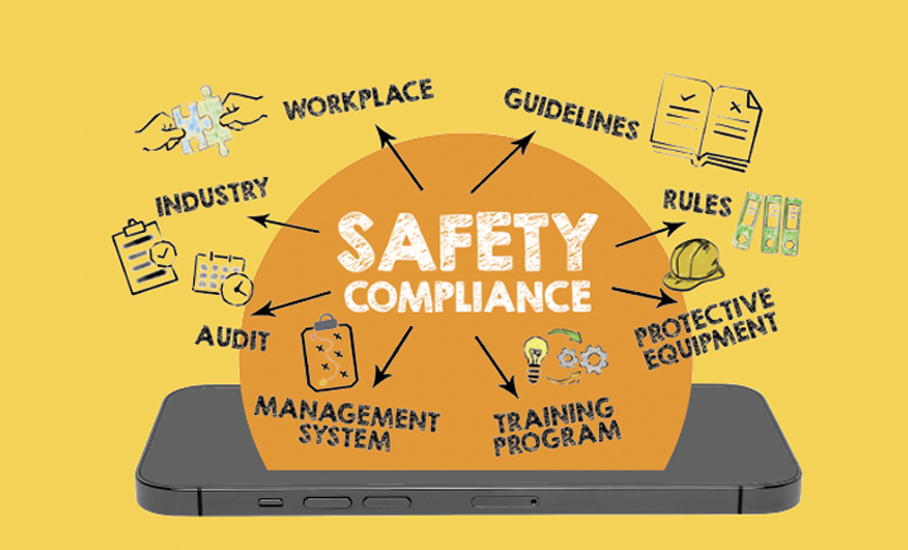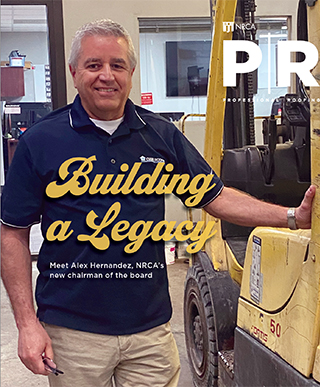
June is National Safety Month and the perfect time to heighten awareness of safety and health risks facing employees and reduce workplace injuries and fatalities. It’s also a good time to explore a new view of safety rooted in human and organizational performance.
Human and organizational performance strategy asks you to view employees as problem-solvers rather than problems to be fixed and can help your company shift its failure mindset.
Human error
In his book The 5 Principles of Human Performance, Todd Conklin describes the principles of “safety differently” and human performance as follows:
The 4 Principles of Safety Differently:
- Safety is not defined by the absence of accidents but by the presence of capacity.
- Workers aren’t the problem; workers are the problem-solvers.
- We don’t constrain workers to create safety; we ask workers what they need to do work safely, reliably and productively.
- Safety doesn’t prevent bad things from happening. Safety ensures good things happen while workers do work in complex and adaptive work environments.
The 5 Principles of Human Performance:
- Error is normal. Even the best people make mistakes.
- Blame fixes nothing.
- Learning and improving are vital. Learning is deliberate.
- Context influences behavior. Systems drive outcomes.
- How you respond to failure matters, and how leaders act and respond counts.
To discuss failure, we must discuss the seed from which failure springs: error. As the adage goes: “To err is human.” You cannot remove error, but you can defend against the inevitability of error by shifting toward error tolerance. Error is not the opposite of success—it’s a part of being successful.
As humans, we often work with complex systems that require adaptable problem-solving skills, and yet we remain just as capable of making simple mistakes with a set of hand tools. Human error is neither special nor unique, and accepting this truth allows us to stop trying to fix people and begin fixing the systems in which they work.
Errors can be connected to task or job complexity: The more steps there are, the more likely a worker is to make a mistake. Operational goal conflicts are another area where errors increase if a worker is asked to choose between the lesser of two evils. Part of being error-tolerant (or building capacity) is looking for situations where errors are likely to occur. Finding these situations allows you to increase capacity (or defenses) to match your level of risk.
Failing to do so means errors will accumulate and can culminate in failures. In the realm of human performance, understanding what failed is more crucial than understanding who failed. Understanding what failed enables you to devise effective, sustainable solutions whereas focusing on the who only assigns blame.
It’s critical to note failing does not equate to being a failure. Many roofing companies have estimators who have made errors on quotes, which led to projects failing to make a profit. The distinction between good and great lies in how companies respond. Good companies blame the estimator; great companies fix the estimation process. Great companies “fail forward,” and when it comes to safety, they “fail safely.” This emphasis on learning from failures and using them as stepping stones to success can serve as a powerful motivator.
In the realm of human performance, understanding what failed is more crucial than understanding who failed.
Harvard Business School Professor Amy C. Edmondson asks students whether failure is preventable, unavoidable or intelligent.
A preventable failure is a deviation from a well-understood and outlined process, such as manufacturing settings with assembly line-like processes.
An unavoidable failure stems from the inherent uncertainty of work, such as small process failures. These failures often are inevitable, and considering them bad is counterproductive because rapid identification and correction of small failures can avoid consequential failures.
An intelligent failure occurs when experimentation is necessary because answers aren’t knowable in advance. This could happen in a test lab or when a manufacturer’s marketing department launches a new product where discovery is part of the job.
By adopting a proactive approach to safety and error management, leaders not only can prevent accidents but also foster a culture of continuous improvement and innovation. This can lead to increased productivity, reliability and business success.
Fail safely
Most people have heard of a “fail-safe,” which is something that causes machinery to revert to a safe condition during a breakdown or malfunction. A fail-safe also can be a system or plan put into play when things go wrong to keep failure from having disastrous consequences. A common type of fail-safe in the U.S. is fire protection: When a fire occurs, we have items and systems in place to help us “fail” safely. Most people don’t consider the presence of fire extinguishers, building fire suppression or sprinklers, fire detectors and even their local fire department as mechanisms to fail safely. Still, these exist as a response to past failures and to fail safely in the future.
Falls are still the No. 1 cause of fatalities in the roofing industry. To fail forward, we must ask what the fail-safe would be in the event of a fall. What could return someone to a safe state and mitigate catastrophe if a fall occurs? You may immediately answer a fall-arrest system: If I fall, I want that fall to be stopped before I go too far and contact the ground. Now, to continue to fail safely, you need to ask: How will I get down without making matters worse?
Estimators also play a role in safely failing. Many falls from heights involve skylights, smoke vents, roof openings and deteriorated roof decks. If you want to learn from the past, you need to consider the process in place and ask whether your estimation process is being improved to fail safely. Do you know whether estimators are looking at the undersides of roof decks and communicating whether they were made aware of roof openings? And if so, can this information be included in the job planning?
Having a plan to address these items safely before work begins and including them in the bid stages makes for better, more thoughtful mitigations and increases the likelihood of failing safely. Even the best of us make mistakes, so the more we can improve our organization’s tolerance for these mistakes, the less effect those mistakes will have.
Another example is personal protective equipment, which often is used to fail safely when hazards cannot be eliminated as it mitigates the consequences when an incident occurs.
Because PPE doesn’t prevent an event, it is considered the least effective control, but it improves outcomes. The difference between failing with disastrous consequences and failing safely might be a pair of safety glasses. Nail guns are standard on many roofing job sites, but few think through the worst-case scenario with these tools and what failing safely might look like.
If you have a sequential trigger (one that re-quires you to press or actuate the safety tip and then pull the trigger), this event failed safely before it even happened. Without that type of tool, your workers may depend on PPE to fail safely and prevent disaster. A nail gun can shoot a 3-inch nail faster than 100 mph, which is 150 feet per second. To succeed, you must understand the potential failure and look for opportunities to fail safely.

Visit nrca.net/safety for additional information about human and organizational performance and failing safely in the roofing industry. NRCA members are encouraged to access NRCA toolbox talks for additional resources to train and educate workers.
Other safety resources can be found through the CPWR-The Center for Construction Research and Training at cpwr.com, which provides training tools regarding prevention, and the Occupational Safety and Health Administration at osha.gov, which offers informational resources.
Leadership
Leaders must understand and expect errors in an organization; perhaps more importantly, leaders must understand and be deliberate in their responses. When failure occurs, leaders can choose between blame and improvement.
How easy have you made it for your employees to come forward with concerns and issues? Is your leadership team open to receiving feedback? Many organizations excel at making good news acceptable, but few organizations are good at receiving bad news. Leaders who historically responded poorly to bad news won’t hear about a new issue until the consequences are too significant to ignore. Good managers and leaders make their workplaces psychologically safe.
How can leaders effectively respond to failure in a way that promotes learning and improvement? Start with the things you shouldn’t do:
- Don’t try to figure out who to blame.
- Don’t look for ways to hide the problem.
- Don’t try to make the problem go away.
Instead, take a breath, remove any immediate emotional reaction and put yourself in the employee’s shoes. It’s unsettling to deliver bad news, but the announcement can appear worse coming from a leader in the wrong headspace. Try the following:
- Listen: Don’t jump to solving the problem. Listen without responding. Don’t interject or attach emotions to the issue. Instead, work to understand so you can work with employees through the next steps.
- Acknowledge: Clarify your understanding of what has occurred. Use three-way communication to repeat your understanding so employees can correct any misunderstandings immediately. Assure employees nothing terrible will happen to them for delivering bad news and you are there to help them work through the issue.
- Ask questions: To gain further understanding, refrain from immediately solving the problem. If you become the solution to every problem, you also become the bottleneck for future issues.
- Support the plan: Empower your people to be problem-solvers and clean up messes. Provide alternatives if the plan isn’t good; otherwise, make a few suggestions and allow them to take ownership and pride in their work.
- Reevaluate later: Discuss how the gap was bridged to prevent the incident from happening again locally or in the short term after the immediate issues are resolved.
- Learn and grow: Something terrible has happened and things will improve soon, but now you must work to improve in the long-term, which means looking for ways to prevent or fail safely in the future.
Remember, hidden problems never go away, and your leadership response determines whether future issues will be hidden or solved.
Look at your feedback mechanism between the field and management to increase your error tolerance as an organization. Your field personnel often have a more complete view of how work occurs than management. Management often only receives about 10% of the information field personnel do about the work. Field employees see all the process gaps and can more easily recognize where problems will likely occur.
There are many ways to start these feedback loops, from near-miss reporting systems to simple employee suggestion boxes.
Make the change
During a recent NRCA Safety Leadership Workshop, retired Naval Commander Brett Holdiman discussed the Kotter method of driving change. This method starts with developing a sense of urgency in an organization around the need for change and leading this change through visible support from key leaders within your organization.
As you build momentum, you start identifying and removing hurdles you encounter along the way. Celebrate quick wins—nothing motivates people more than success. Set goals, continue building momentum and embed the change in your corporate culture.

Adrianne Anglin, CSP
Director of safety and risk management
NRCA


